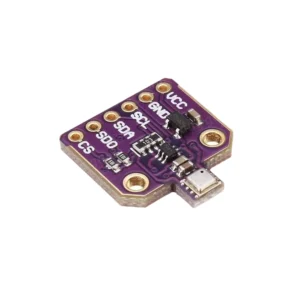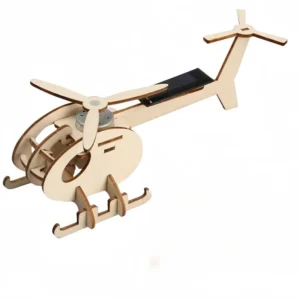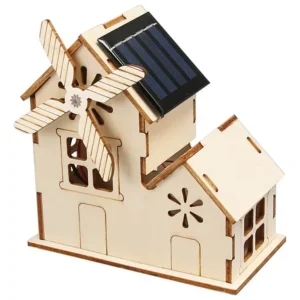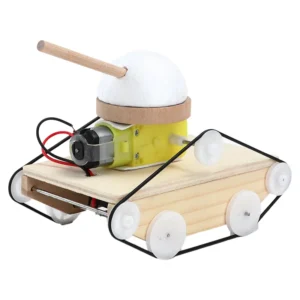Overview
The T-M420 Taxiing Aircraft DIY Learning Kit is a hands-on STEM project designed to teach fundamental principles of aerodynamics, propulsion, and mechanics through a motorized taxiing model. Students assemble a working battery-powered model that demonstrates real-world ground motion, energy conversion, and mechanical systems. The kit converts abstract physics concepts into tangible experiments suitable for classrooms, science fairs, and maker workshops.
Key Features and Benefits
- Realistic taxiing demonstration: Motor-driven propeller and wheel assembly show thrust, rolling resistance, and acceleration in a compact model.
- STEM-focused curriculum support: Reinforces lessons in aerodynamics, thrust vs. drag, friction, balance, and energy conversion through hands-on learning.
- Complete DIY assembly: Includes all components, connectors, and tools plus clear, step-by-step instructions to develop fine motor and technical skills.
- Beginner friendly: Simple parts and straightforward assembly make the kit accessible to students new to model building and engineering projects.
- Durable, repeatable use: High-quality plastic and lightweight metal components withstand repeated classroom experiments and testing cycles.
What the Package Includes
- Aircraft body and wing components
- Battery-operated DC motor and propeller
- Wheels, axle assembly, and mounting hardware
- Wiring, connectors, switch, and battery holder
- Mounting screws, small tools, and fasteners
- Step-by-step instruction manual with diagrams
Specifications
- Power source: Battery-operated DC motor
- Assembly type: DIY unassembled kit
- Materials: High-quality plastic and lightweight metal parts
- Recommended age: 10 years and above
- Skill level: Beginner
- Learning focus: Aerodynamics, propulsion, motion, and energy conversion
- Approx. dimensions (assembled): 18 cm × 15 cm × 8 cm (may vary slightly)
Learning Outcomes and Classroom Applications
- Visualize how thrust, friction, and mass affect ground movement and acceleration.
- Explore balance, center of gravity, and design choices that influence stability and steering.
- Apply basic electrical concepts by wiring the DC motor and switch safely.
- Practice problem-solving, teamwork, and project planning during assembly and testing.
- Use the taxiing model as a demonstration for science fairs, engineering challenges, and aviation-themed lessons.
Classroom Activity Ideas
- Compare different propeller sizes and measure their effect on taxiing speed and acceleration.
- Test wheel surfaces and track materials to study rolling resistance and friction.
- Run weight distribution experiments to observe center of gravity and stability changes.
- Integrate a simple data-collection exercise using timers or distance markers to calculate acceleration.
Assembly Tips and Teacher Notes
- Prepare workstations with pre-sorted parts and clear tool access to streamline assembly time.
- Encourage students to read each instruction step fully before assembling to build planning skills.
- Allow time for trial-and-error testing so students can iterate on propeller size, wheel surface, or weight placement.
- Use the manual as a basis for assessment rubrics focused on process, collaboration, and engineering reasoning.
Safety and Recommendations
- Recommended age: 10 years and above. Adult supervision advised for wiring and battery handling.
- Follow the instruction manual for safe wiring, motor mounting, and secure connections to avoid shorts or loose parts.
- Keep small components away from young children and store parts safely after use.
Why Choose the T-M420 Taxiing Aircraft DIY Learning Kit
The T-M420 offers a compact, affordable, and engaging way to bring aerodynamics and propulsion into hands-on STEM lessons. Its complete hardware set and beginner-friendly assembly make it ideal for teachers and parents seeking an interactive learning tool that reinforces physics concepts while building technical confidence. Use the kit to spark curiosity about aviation and to motivate further exploration in engineering and science.
Note: Images are for illustration purposes only.














Reviews
There are no reviews yet